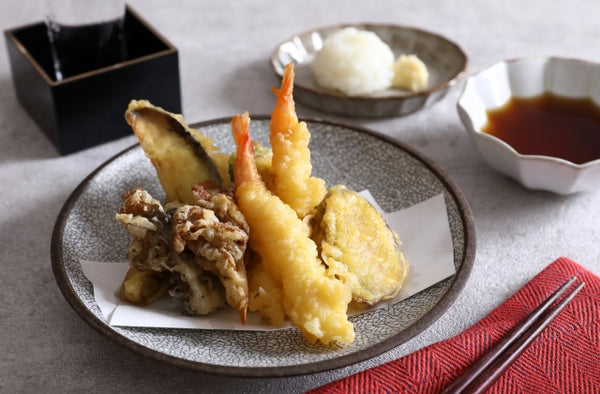The History of Tempura
 Tempura is one of Japan’s most iconic foods. It appears in traditional dishes served at high-end Michelin-star restaurants, as well as some of the most popular American-style Japanese food (I’m thinking of you dragon rolls and spider rolls!) With that iconic status, it may or may not come as a surprise that this beloved staple of Japanese cuisine originated from outside Japan!
Tempura is one of Japan’s most iconic foods. It appears in traditional dishes served at high-end Michelin-star restaurants, as well as some of the most popular American-style Japanese food (I’m thinking of you dragon rolls and spider rolls!) With that iconic status, it may or may not come as a surprise that this beloved staple of Japanese cuisine originated from outside Japan!
Nearly 500 years ago, 16th-century Portuguese sailors experienced an unexpected turn in their journey that would change the course of Japanese history (and its food) forever. Bound for Macau and blown off-course, the group of sailors made landfall on the southern island of Tanegashima in modern-day Fukuoka Prefecture. It was there that they would eventually set up a trading post as the first Europeans to step foot in Japan.
Along with weapons to fuel Japan’s civil war, they traded in tobacco, soap, and as one might guess, food! This continued until 1639 when the Portuguese were banished from Japan due to fears that their introduction of Christianity threatened contemporary powers. However, their imprint on Japanese food was there to stay.
The first iteration of what would come to be known as tempura was, in fact, a Portuguese dish called piexhinos de horta, meaning “little fish of the garden.” Unlike its name might suggest, this was a dish made not from fish, but rather from green beans. The crunchy texture, covered in batter and deep fried, was enjoyed by Portuguese people during Lent because of its similarity to crispy fried fish. In fact, the name tempura comes from the Latin word tempora, referring to the fasting time during Lent.
Tempura has evolved significantly, with various vegetables and seafood now served in tempura restaurants. After inheriting the dish, Japanese chefs gradually lightened the batter to what it is today. Different regions in Japan developed their own versions: Nagasaki had a thicker, fritter-like version, while Kyoto and Osaka focused on vegetables with lighter batter. In Edo (modern-day Tokyo), the batter began to resemble its current form, with seafood as the primary ingredient. The batter and sesame oil were used to reduce the fishy smell.

Today, the art of tempura continues to evolve, with variations across Japan altering the batter or frying oil. Tempura's influence has even reached beyond Japan's borders. With its rich history, the future looks bright for this treasured dish!
About the Author:
 Kevin Kilcoyne
Kevin Kilcoyne



